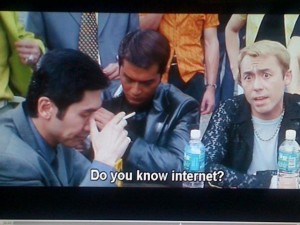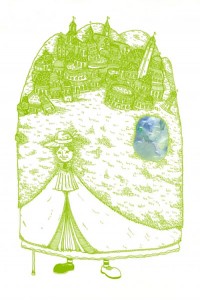Panax Ginseng is a monthly column by Henry W. Leung exploring the transgressions of linguistic and geographic borders in Asian American literature, especially those which result in hybrid genres, forms, vernaculars, and visions. The column title suggests the congenital borrowings of the English language, deriving from the Greek panax, meaning “all-heal,” and the Cantonese jansam, meaning “man-root.” The troubling image of one’s roots as a panacea will inform the column’s readings of new texts.
*

*
When I spoke at the “Speaking in Tongues” panel for AWP in Chicago, organized by Sandra M. Yee, I found myself taking issue with the panel’s description:
In this panel of rising young artists, each writing inside two or more languages and/or cultures, we examine how we see ourselves pushing against literary and cultural traditions. How do we challenge our assimilation into the English language? To whom do we owe our allegiance as writers? Who is our audience? Whether code-switching or speaking in ancestral tongues, how do we act as representatives of our cultures? And in an increasingly globalized society, how do we embrace or shun these roles?
In my talk, I questioned the idea of writing “inside” two or more languages and cultures, because that “inside” presupposes an “outside.” Prepositions in English—at, on, into, through, from—tend to be physical or directional. In the grammar of other languages, such as in Chinese, prepositions are largely nonexistent or based on context. But in English, to write “inside” a tradition is to situate that activity within space, and to define a space is to define its boundaries.Since, despite my complaints, I am still bound to the grammatical strictures of English,) I would prefer to say that rather than writing “inside” languages and traditions, we write “across” them. One example I provided in my talk was a recently published short story by playwright and author Rosebud Ben-Oni, to whom my talk was dedicated. I wish to comment more at length about the story here.
Continue reading “Panax Ginseng: Barbarize the Rules (pt. 2 of 2)”
